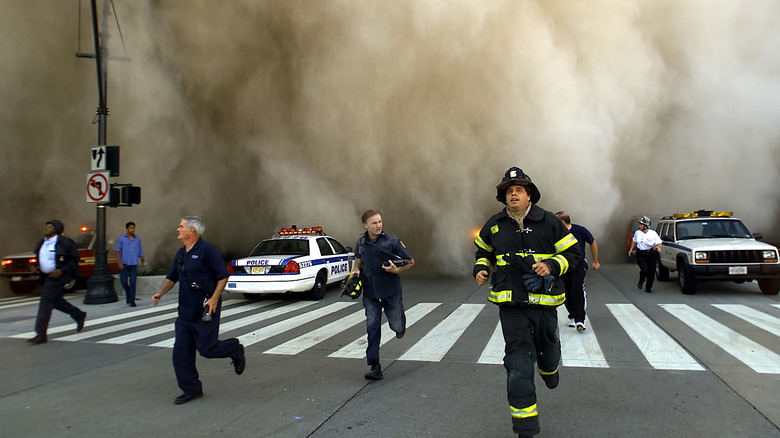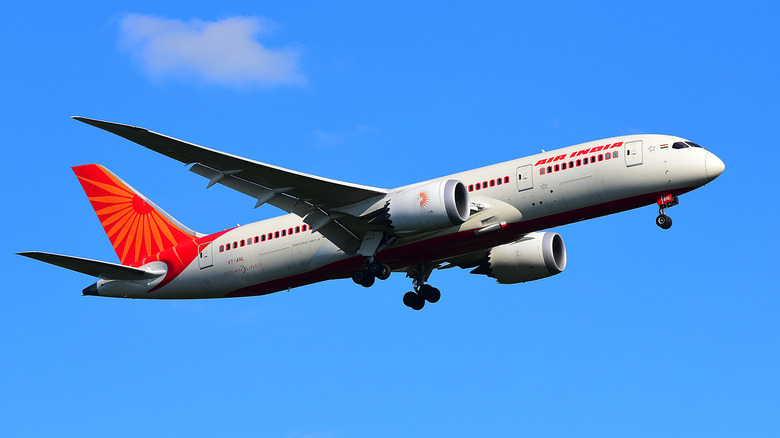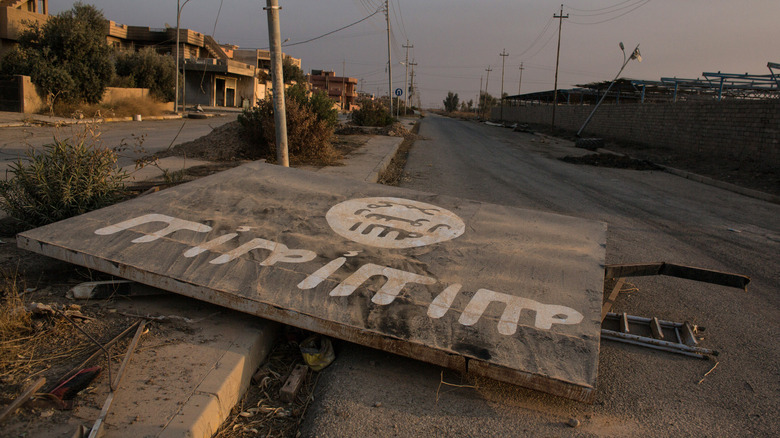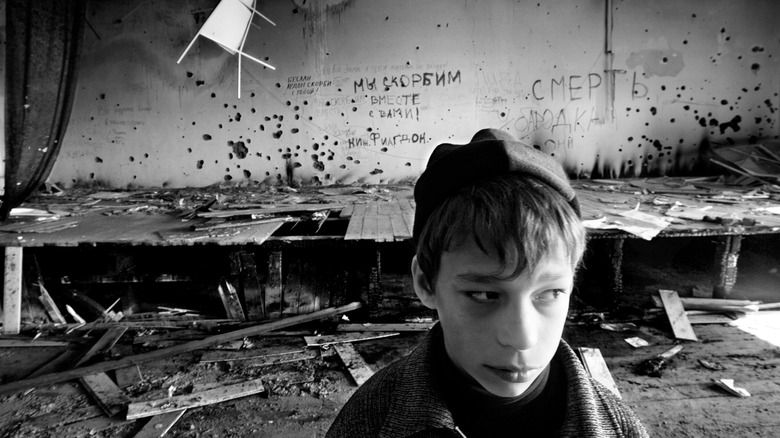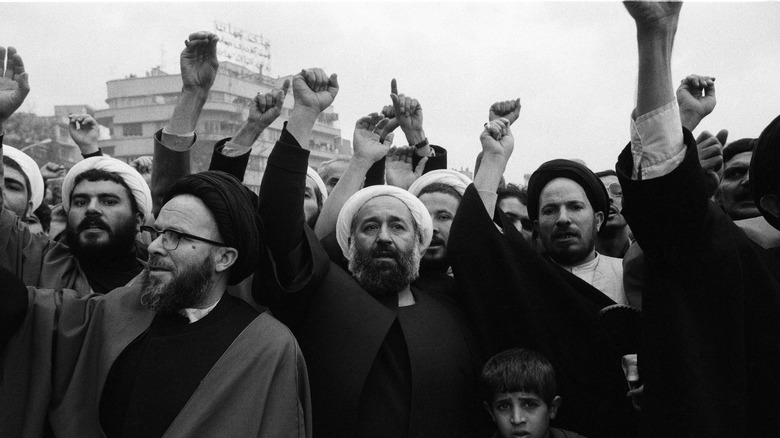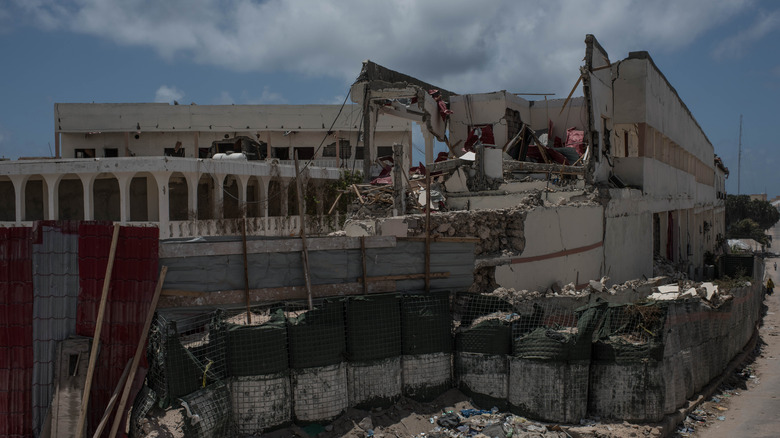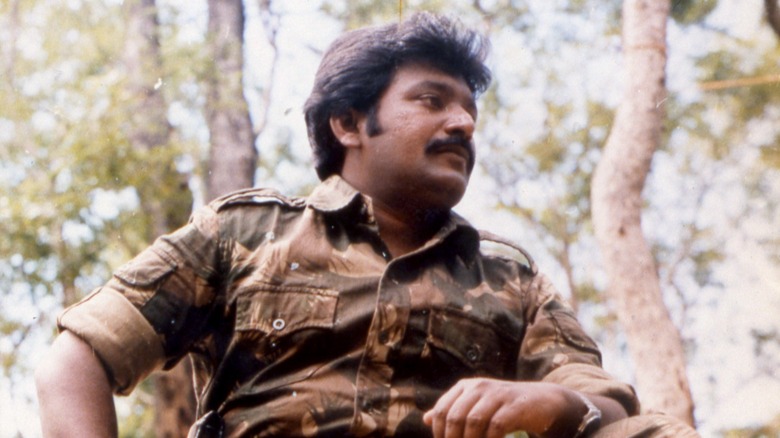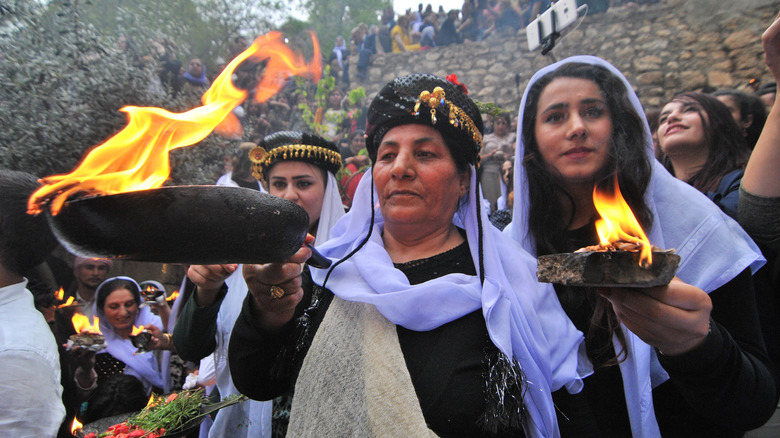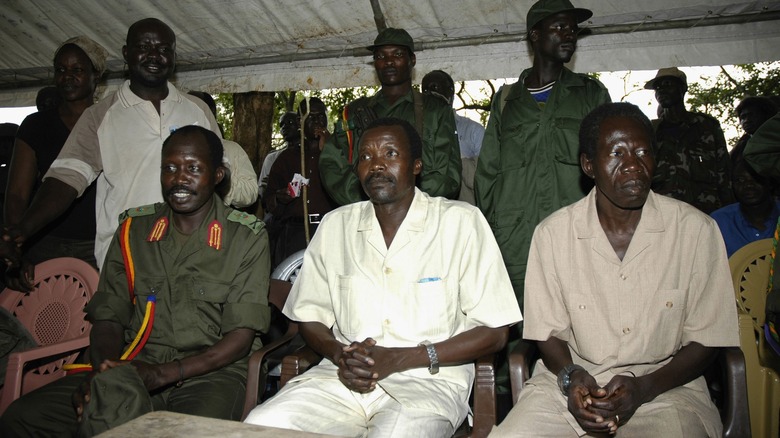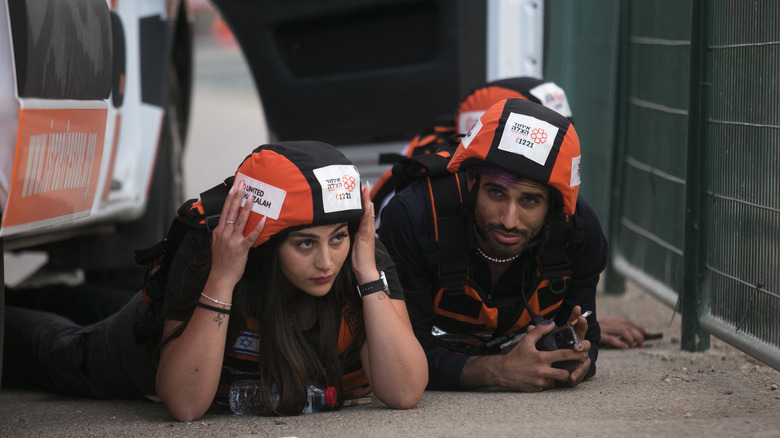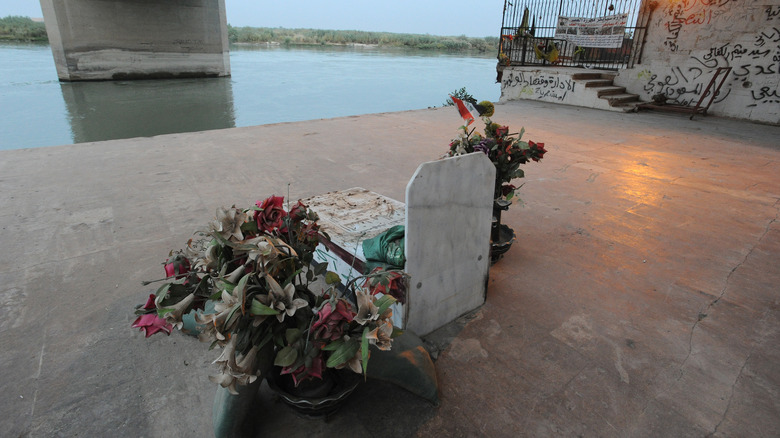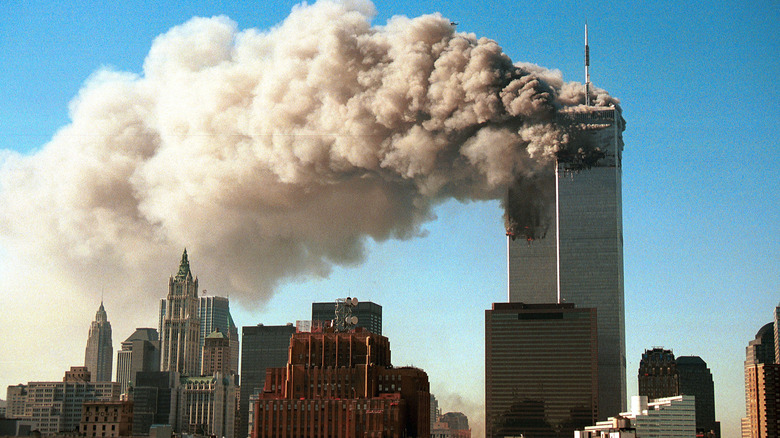Deadliest Terrorist Attacks In History
The purpose of terrorism is right there in the name. They are designed to sow fear, and the main way terrorists achieve that goal is through destruction and death. Most terrorist attacks are primitive in terms of equipment and planning, and many are performed by people who know they will not survive the act. Nevertheless, they are devastatingly effective for the simple reason that they bring violence to places where violence is not supposed to be.
And the power of a terrorist act goes far beyond the immediate damage and casualties. Their influence can last for years and even decades as it forces people to change the way they live, restrict their own freedoms, and make their lives more difficult in the service of security. The psychological and economic scars of terrorism run deep and take an incredibly long time to heal — if they ever do.
But that doesn't mean the death toll of a terrorist act is unimportant. The innocent people who lose their lives to a terrorist attack must always be remembered, and the impact of such an attack is directly proportionate to the number of people whose lives it takes. Here are the deadliest terrorist attacks in history.
Air India Flight 182 bombing, 1985: 329 deaths
Terror as a tactic needs two things to be effective: surprise and casualties. Unsurprisingly, terrorists like to identify scenarios where a large group of people can be isolated and attacked en masse. As a result, airplanes have always been irresistible targets because once in the air, the crowd of passengers is trapped and cut off from assistance.
As reported by The Caravan, on June 23, 1985, a group of Canadian Sikh terrorists took advantage of these factors on an Air India flight flying from Montreal to London. They managed to smuggle two bombs in suitcases on board the plane and detonated them mid-flight. The plane "disintegrated" in the air, killing all 329 people on board. The Conversation notes that among the victims were 82 children. The bombing was the greatest mass murder in Canadian history.
The militants, the Babbar Khalsa International group, demanded a sovereign Sikh state. Incredibly, only one person has ever been convicted of involvement in the attack. The other suspects are known to authorities, but because there are many jurisdictions involved — including Canada, India, and Ireland (where the plane crashed) — a more complete investigation has proved impossible.
Gamboru Ngala massacre, Nigeria, 2016: 336 deaths
As BBC News explains, Boko Haram are religious fanatics who want to transform Nigeria into an Islamist state. They believe that any association with Western ideas or practices is forbidden and regard the government of Nigeria as illegitimate because of its tolerance for such practices — including educating its people and allowing them to dress in Western-style.
You probably know the group best for its tactic of kidnapping schoolgirls in order to force them into slavery and marriage. But in 2016, the terrorist group engaged in one of the deadliest terrorist attacks ever committed when they destroyed an entire town in northeast Nigeria. As reported by Business Insider, the group lured security forces away from the town of Gamboru Ngala with rumors that kidnapped girls were seen nearby. With the army elsewhere, they rampaged through the town without much of a plan. According to The New York Times, the group set buildings on fire and shot people more or less indiscriminately. When the dust settled, the group had killed 336 people out of a population of about 3,000.
The attack exposed the Nigerian government's inability to stop Boko Haram. More recently, the group has shifted its tactics from individual attacks to holding territory in an attempt to create a "caliphate," similar to what ISIS managed to do in Syria and Iraq, per the Parliament of Australia.
Karrada bombing, Iraq, 2016: 341 deaths
As reported by BBC News, this devastating Karrada bombing took place on a Sunday morning in Baghdad while families shopped on a busy street. It was a holiday closing off Ramadan, the Islamic holiday marking the revelation of the Quran to Muhammed. Perpetrated by the Islamic State (ISIS), the attack targeted Shia Muslims, and the holiday timing was deliberate — holidays are popular times for terrorist attacks because it's easy to locate crowds, and security is usually lax.
This attack was a typically brutal example of terrorism's grim power. As noted by CNN, the attack used a truck packed with high-powered explosives driven by a suicide bomber who drove it onto the crowded street and detonated it. While many people were killed instantly by the explosion, The Atlantic notes the grim effectiveness of this particular attack: The explosion set a nearby building on fire, trapping hundreds of people inside. The building only had one entrance and very few safety protocols, and the fire exits were all closed off, making it a deadly place the moment the flames erupted. The death toll rose steadily as emergency workers spent several days extracting the charred remains of victims from within. According to WorldAtlas, the final death count was 341.
Beslan school hostage crisis, Russia, 2004: 385 deaths
On September 1, 2004, the students, parents, and teachers of School No. 1 in Beslan, Russia gathered on the playground for a ceremony marking the first day of school. As reported by History, they were suddenly surrounded by a large group of Chechnyan terrorists, with some people killed immediately in the initial rush and the rest herded into the school gym. According to Britannica, there were more than 1,000 hostages — many of them small children.
BBC News reports that the terrorists demanded that Russia remove its troops from Chechnya. Russian security forces arrived, and for three days there was a standoff between the two groups. During this time, the hostages were not given any food or water, and some report that desperate people resorted to drinking their own urine. On the morning of September 3, several explosions were heard inside the building, and it was decided that Russian forces would storm the school.
The assault was chaotic and poorly planned, and many believe the Russian security forces caused the deaths of many more hostages than necessary as a result. In 2017, the European Court of Human Rights essentially agreed with this assessment. According to WorldAtlas, the final body counting was 385 — many of them children.
Massacre of Trujillo, Colombia, 1988-1994: 400 deaths
We tend to think of terrorist attacks as sudden spikes of violence — bombings and shootings that are over almost as quickly as they begin. Indeed, terrorism is usually designed to be shocking in its speed and brutality. But the Massacre of Trujillo is proof that terror can be generated over the course of years just as effectively. PBI Colombia explains that the Trujillo Massacre wasn't just a single murder; it was a series of horrifying assassinations carried out by drug cartels with the explicit assistance of the police, the army, and local officials.
The cartel wanted to secure a route for the transport of their illegal wares. But civilians had been known to cooperate with resistance groups to disrupt these shipments, and the cartels were willing to kill just about everyone in the area to make the problems go away — which certainly fits the definition of terrorism. According to AP News, the victims were first tortured and were often dismembered using a chainsaw.
Initial reports of the violence were discounted as outlandish and unbelievable, but when investigations into the killings were finally undertaken, everyone was shocked at the extent of this insanity. As noted by WorldAtlas, around 400 people lost their lives to cartel greed.
Cinema Rex fire, Iran, 1978: 420 deaths
Prior to the Islamic Revolution, Iran was a repressive monarchy that was very friendly to the United States and the West. Or at least the Shah, Mohammad Reza Pahlavi, whose family had been placed in control of the country via a coup orchestrated by the United States, was friendly. But as noted by The National Interest, the Shah faced an increasingly unhappy population torn between extremist views, especially of the conservative Shia Muslim clerics.
It was a popular act of terrorism to set movie theaters on fire because the movies were seen as a vector for Western propaganda. The Washington Post reports that on August 19, 1978, terrorists set fire to a crowded movie theater in the city of Abadan. Four men barred the exits of the theater and doused the building with fuel. Then they set everything ablaze and fled.
The perpetrators were never conclusively identified. What is certain is that this attack — which WorldAtlas reports claimed 420 lives — was the fuse that set off the revolution that ousted the Shah from power in 1979. Many Iranians on both sides were convinced that the fire had been set by the SAVAK — the secret police — and protests inspired by the fire quickly coalesced into a full-scale revolution that changed Iran forever.
Mogadishu bombings, Somalia, 2016: 655 deaths
Somalia, and especially its capital city of Mogadishu, is no stranger to terrorist attacks. But one of the deadliest in its history was kind of an accident. The Guardian reports that a truck filled with explosives was meant to be driven to a government building, while the Associated Press suggested the target was a busy airport. When the truck was stopped by police at a checkpoint, the driver appeared to panic. Hitting the accelerator, he drove the truck through a barricade as soldiers fired on him and smashed into a tanker filled with fuel that was parked near a hotel. The resulting explosion was much more massive than could have been achieved with just the truck. In addition, NPR reports that a second truck bomb detonated two hours later.
According to BBC News, no one ever claimed responsibility for the attack. Nevertheless, it was believed to very likely be the work of a militant group called Islamist al-Shabab, which has been behind several deadly attacks in Somalia. NPR reports the Somali government believes the group was trying to inflict as many civilian casualties as possible because they have been losing their struggle against the government.
WorldAtlas reports the final tally at 655 dead. As the death toll crept higher and higher, Somalis came to refer to this attack as their 9/11.
Sri Lankan police officers massacre, Sri Lanka, 1990: 774 deaths
Most terrorist attacks target civilians. In part, because they offer a lower chance of a trained, armed response, and also because of the fear and dread that result. But in 1990, a terrorist group known as the Liberation Tigers of Tamil Eelam (LTTE) shocked the world by murdering nearly 800 of the country's police officers in what can only be termed a massacre.
According to Britannica, the LTTE demands an independent Tamil state in northeastern Sri Lanka. Well-organized and sophisticated, their fight bloomed into an all-out war in the 1980s, and they began to hold territory in parts of the country. Daily News reports that on June 11, 1990, a large group of LTTE fighters seized a police station in the country's Eastern Province. According to the Los Angeles Times, the LTTE's attack was a surprise because they were actively engaged in peace negotiations with the government. Holding several police officers hostage, they looted the station of any valuables and demanded that all the other police stations in the area be vacated. The government, receiving guarantees of safe passage for the police officers, agreed, and the police surrendered.
Per WorldAtlas, the LTTE drove nearly 800 officers out into the jungle, tied their hands behind their backs, and shot them. The massacre destroyed any chances of a negotiated peace between the government and the LTTE.
Yazidi communities bombings, Iraq, 2007: 795 deaths
The Yazidi are an ethnic and religious minority living in Iraq. According to The Guardian, the Yazidis have historically faced severe discrimination and oppression in part due to their religion, which incorporates elements of Christianity, Islam, and Zoroastrianism. Terrorist attacks and other acts of violence against the Yazidi are depressingly common.
In 2007, however, these attacks reached a grim zenith. As reported by The New York Times, several trucks filled with explosives were driven to the remote, poor Yazidi settlements in northern Iraq and detonated, killing nearly 800 Yazidis. One of the most heartbreaking aspects of the attack was the fact that the Yazidi refused to leave the wounded in local hospitals because they didn't believe they would be safe. They insisted on taking their loved ones home to their villages in the desert, believing they would at least have some security in numbers.
Although no group took official credit for the brutal attack, the United States came to believe the terrorist group Al Qaeda was responsible, Reuters reported. Later in 2007, they claimed to have killed the mastermind behind the Yazidi massacre, Abu Mohammad al-Afri, via a drone strike. Afri was described as an "emir" — or prince — and operated in the region where the Yazidi attacks took place.
Christmas massacre, Democratic Republic of the Congo, 2008: 865 deaths
As explained by Britannica, the Lord's Resistance Army (LRA), led by the infamous Joseph Kony, is one of the least defined terrorist organizations around. It has few defined objectives, such as overthrowing the Ugandan government and creating a new one based closely on the Ten Commandments. But that's it as far as their philosophy goes. As The Guardian reports, the group's only agenda appears to be killing and kidnapping people in order to keep up their numbers.
Unfortunately, the LRA is also one of the most brutal and horrifying groups in the world. The LRA routinely murders, rapes, and kidnaps people, including young children, who are used slaves and to train as soldiers. And their violence hit a horrifying new height in 2008. Human Rights Watch reports that in December of that year, units of the LRA attacked several groups of civilians gathering to celebrate Christmas. These innocent people were clubbed and hacked to death — and worse — in coordinated attacks at the precise moments when the most people would be gathered together.
The death toll of the Christmas massacre reached 865 — possibly more. In addition, about 160 children were abducted by the group. According to BBC News, the LRA repeated the attacks, killing about 300 more civilians in 2009.
Surprise Hamas attack, Israel, 2023: Over 1,200 deaths
For decades, Israel has long experienced sporadic and occasionally fierce attacks from Gaza, in recent years through rocket strikes launched into Israel. Since the Iron Dome was deployed in 2011, Israelis living in the regions bordering Gaza have been afforded a modicum of security, and in early October of 2023, as a historic agreement between Israel and Saudi Arabia grew closer, hopes for a greater peace had been rising.
In the morning of Saturday, October 7, 2023, the sound of rocket fire and blaring warning sirens rang out, but within a few short hours, it was apparent the scale of this attack was far worse than before. As missiles rained down, armed Hamas militants forced through Gaza's border fence and moved into nearby Israeli settlements. According to the BBC, as dawn was breaking, 260 festival-goers at an all-night rave in the Negev desert were killed by terrorists riding in vans and even paragliders. In the modest Israeli town of Kfar Aza, per CNN, Israeli troops described the atrocities inflicted as akin to that of ISIS, with civilians butchered en masse, and the small farming community of Be'eri reported over 100 deaths, in a community of only 1,000.
Hamas militants tore through numerous rural border communities, killing entire families in their homes and the streets, even kidnapping an estimated 150 people to be held hostage in Gaza. After days of intense fighting, Hamas' incursion was repulsed by Israeli forces, and the estimated total Israeli death toll at the time of writing was over 1,200, as reported by CNN. The attack, the worst in Israel's history since 1948, resulted in Israel declaring war against Hamas.
This a developing story.
Camp Speicher Massacre, Iraq, 2014: Over 1,700 deaths
The Islamic State, otherwise known as ISIS, remains a serious terrorist threat. According to The Independent, the group managed to orchestrate the second-worst terrorist attack in history in 2014. At the time, ISIS had just taken the city of Mosul and was quickly rolling up the Iraqi army as it fell apart in the face of the terror group's advance. The commanders of 10,000 army recruits training at an air force base in Tikrit ordered the recruits to go home to their families — and then fled themselves. The recruits changed out of uniform and began walking home, only to be captured by ISIS units.
What happened next was an atrocity with few parallels in history. Al Jazeera reports that ISIS identified the Shia Muslim and non-Muslim recruits and executed them, one by one. They then dumped the bodies into enormous mass graves or simply pushed them into the Tigris river. Per The Independent, over 1,700 cadets were executed.
Many of the surviving recruits believe the commanders were complicit in the massacre and deliberately sent the men walking home unprotected to make them vulnerable to ISIS. As reported by CNN, ISIS posted several videos showing the massacres, leaving no doubt who was responsible — or how brutal the killings actually were.
September 11 attacks, United States, 2001: 2,977 deaths
It's not surprising that the September 11th attacks in New York City, Washington D.C., and Pennsylvania make up the deadliest terrorist strike in history. Many factors came together that day to create that result. As Britannica reports, the attacks were planned and orchestrated by the Islamic terrorist group Al-Qaeda. The 19 men involved in the attacks established themselves in the United States long before the day of the attack and trained as pilots.
On September 11, 2001, the terrorists boarded four domestic plane flights and took control of the planes by wielding boxcutters they smuggled on board. Two of the planes were steered into the World Trade Center in New York, while a third plane crashed into the Pentagon near Washington D.C. Elsewhere, a fourth plane crashed in Pennsylvania when the passengers — alerted to what was happening — heroically attempted to take back control of the aircraft.
As noted by CNN, the death toll was beyond belief. A total of 2,977 people died — 2,753 in New York, 184 at the Pentagon, and 40 in Pennsylvania. That number outpaces the next-deadliest attack by orders of magnitude. As noted by Newsweek, the worst part is that the death toll isn't fixed and continues to rise because people keep dying of illnesses associated with the aftermath of the attack.
